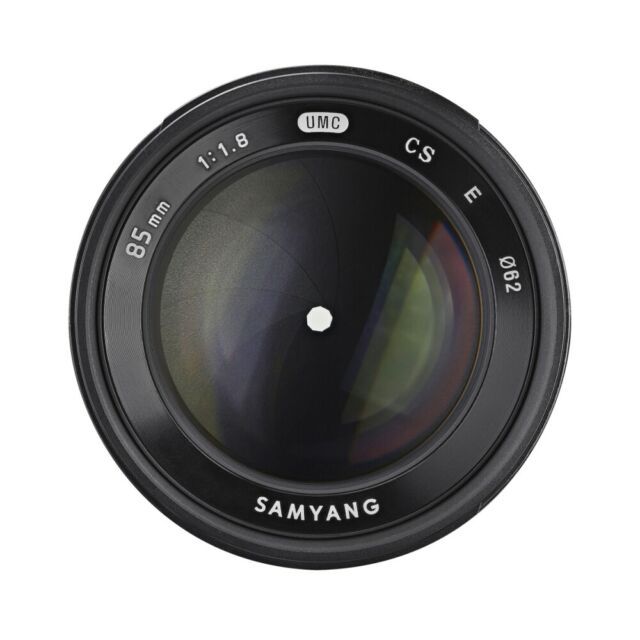Product Description
Samyang 85mm f1.8 CSC Sony E-mount Lens
- Bright aperture value
- Medium-telephoto lens
- Four HR (High Refractive) elements
- Aluminium body
- UMC coating
- High-diffraction lens that effectively controls the path of light
- Low-dispersion lens that corrects chromatic aberration
- Excellent portability

A desirable telephoto for Sony E-mount mirrorless cameras, the 85mm f/1.8 Lens from Rokinon pairs a sleek form factor with a bright f/1.8 maximum aperture for depth of field control and greater versatility in difficult lighting conditions. The optical design features one extra-low dispersion element, which reduces chromatic aberrations and colour fringing, and one high refractive index element to control spherical aberrations for improved sharpness. An Ultra Multi-Coating has also been applied to boost contrast by suppressing lens flare and ghosting. Additionally, the lens has a manual focus design for precise focusing down to 2.1' and a nine-blade diaphragm contributes to a smooth bokeh quality.

Telephoto prime is designed for APS-C-format Sony E-mount mirrorless cameras and provides a 127.5mm equivalent focal length.
Bright f/1.8 maximum aperture suits working in difficult lighting conditions and also affords extensive control over depth of field for isolating subjects and working with selective focus techniques.

One extra-low dispersion element is used to reduce colour fringing and chromatic aberrations in order to produce imagery with a high degree of clarity and colour fidelity.
A high refractive index element is used to control spherical aberrations and distortions in order to realize higher sharpness and accurate rendering.
An Ultra Multi-Coating has been applied to all lens elements in order to suppress lens flare and ghosting for increased contrast and colour accuracy.

This manual focus lens has a non-rotating 62mm front filter mount to better enable the use of polarizing, graduated ND, and other filter types that require precise positioning.
Rounded nine-blade diaphragm contributes to a pleasing out-of-focus quality when using selective focus or shallow depth of field techniques.




















